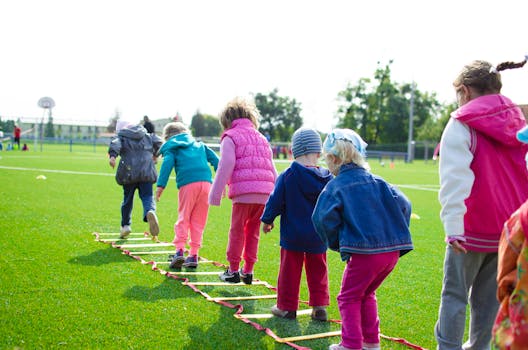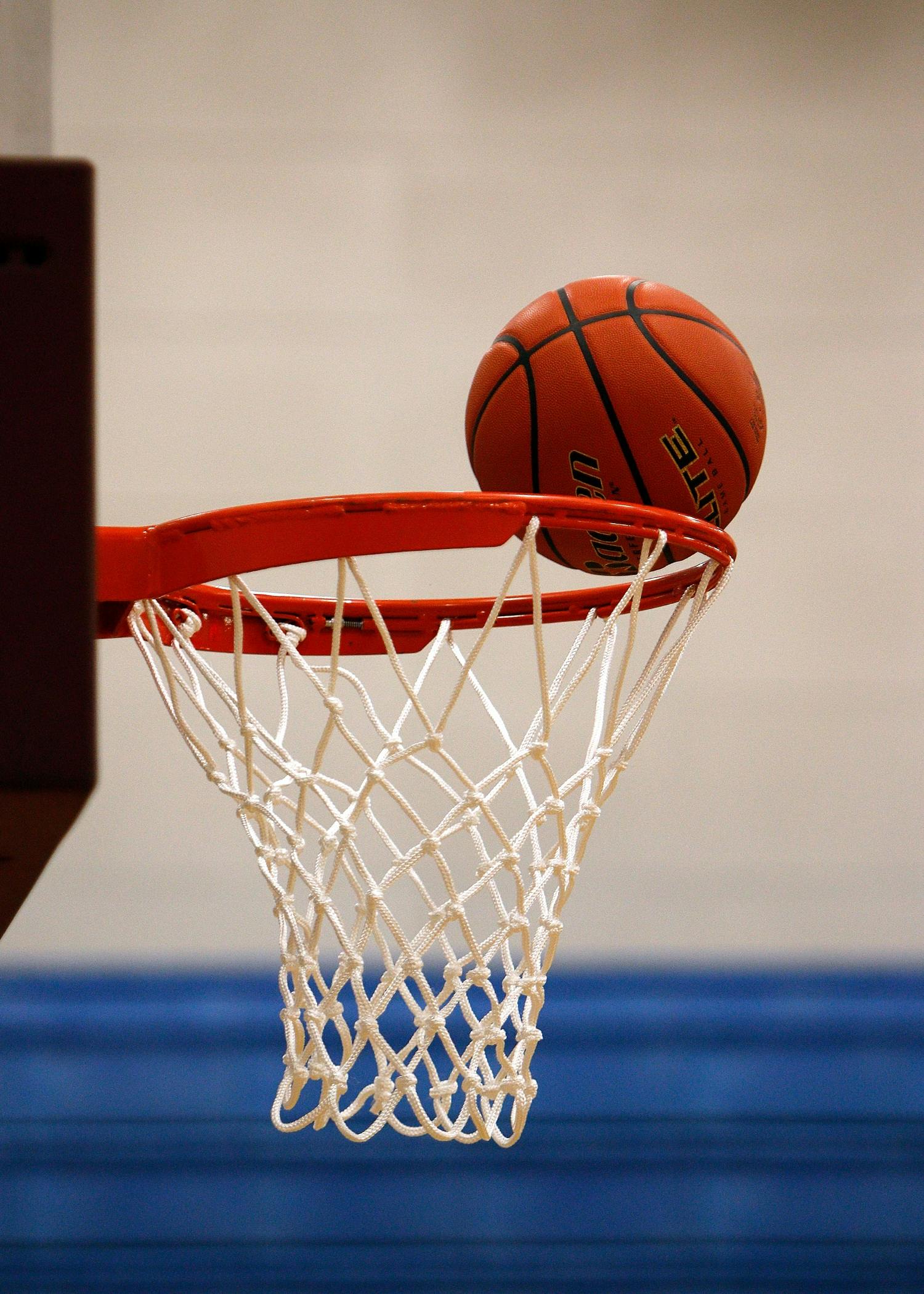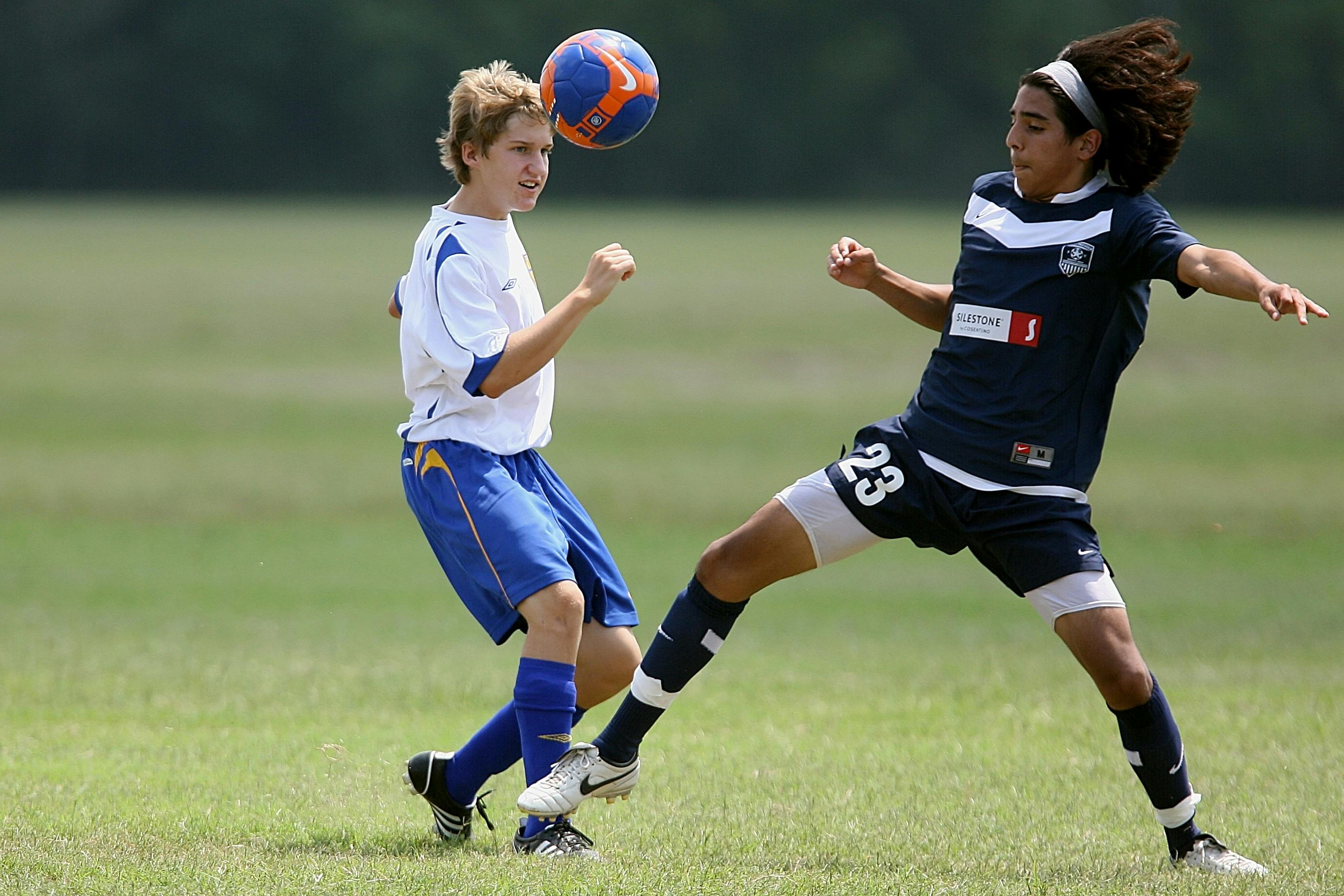“I completely disagree with you. How can you concentrate solely on individual skills when you are introducing the game of soccer – a team sport?” I replied.
“I can guarantee you that the kids that train in our club will be able to run circles around the best players on other teams that haven’t participated in our club.” he responded.
“Okay, but will your players be able to play the game? Will they be able to use the skills they have learned successfully in game-play? Will they be able to use game tactics? Will they have a bond with their teammates? How about with their coaches? Will they love playing the game?” I asked.
“Our training approach works, and we are just going to have to agree to disagree.” he retorted.
“Well, I feel bad for our young athletes who have to have their first soccer experience in training, because they aren’t learning the game of soccer.”
When my daughter turned five-years old, I was excited to volunteer as her recreational soccer coach. I remember playing rec. soccer until I was 14 years old. We would play in the fall against teams from other schools in our school district. One practice was held per week with our soccer coach, and our games were on the often chilly Saturday mornings. I remember the sting of the ball bouncing off my legs in the freezing temperatures. Noses were red, fingers were ice-cold, but we loved it. Players of all abilities came together to learn the game of soccer, and to experience what contributing to a team felt like.
The Awakening
You can imagine my surprise as I sat in on my first coaches meeting for my daughter’s team and was told that the first eight weeks of our ten-week season would be spent in training. I wouldn’t be coaching. I would be watching my players rotate from drill-to-drill – spending five minutes on each skill. Not only were they rotating to different stations, they were rotating to different trainers, so there was no sense of team. Coaches were given five minutes (if we were lucky) to guide our team in a scrimmage – once per week.

Four weeks after the girls had started their first training session, we played our first game. I had yet to coach a practice. To say that they had no idea how to play a soccer game is an understatement. The girls didn’t know how to start the game, they didn’t know where to stand on the field, they didn’t know what the lines on the field indicated, they didn’t know which way to dribble the ball or which net to shoot on, they hadn’t been introduced to passing, and they didn’t know how to play as a team. They didn’t know how to play soccer. They did, however, know how to dribble the soccer ball.
Halfway through the season, parents started mentioning how their daughters were not having fun at training. Several girls also began lying on the grass toward the end of training due to boredom. The club had said that the number one goal for our recreational program was to make soccer fun because then the players would want to continue to play. The training was deterring us from that goal.
Have you ever seen children running drills at recess? How about at the park? Do children get together after school to run drills? Of course not! Drill practice is not fun for anyone.
Once our eight weeks of training had ended, I was finally able to lead my girls in real practices for the final two weeks of the season. We packed in as much game knowledge as we could while playing small-sided games. Within those two weeks, a noticeable difference was apparent in the team’s understanding of the game. The girls started dribbling toward the correct net, I observed the use of rock-paper-scissors to decide who got to take the kick-off, I noticed that the team was beginning to respect the field boundaries, and I even observed a pass or two (developmentally, this is not expected at the five-year-old age). Best of all, I heard conversation happening on the field. The girls were talking, trying to figure-out the game, and using creativity with their skills to move on the field. A light had gone on, and the girls were learning. They were enjoying the game of soccer.
Team Sport and the Overuse of Individual Skill Training
Soccer is not the only team sport that is putting much of the training emphasis on individual skill development. Football, hockey, basketball, and other team sports are doing the same. Before I go on, I want to make something clear. I know that individual skill development is important, but, putting the majority of training focus on individual skill development when introducing a team sport is counterintuitive. Why?
When training programs spend the majority of practice time drilling players, players are not given enough time to use these skills in real-world situations. Also, drills are not fun. Repetition without purpose causes boredom, and the motivation to continue to learn wanes. We need to give youth sports back to the kids. Teachers, coaches, and parents need to allow for the fun to be put back in team sports. Instead of focusing on isolated technique, skill, and drill, we need to use game-play to enhance skills. Replacing dry training methods like drills with game-play will improve skills, tactical understanding (mental plans for game play), creativity, purpose, and motivation.
Training Needs Game-Like Practice Opportunities
Daniel Gopher, Professor of Cognitive Psychology and Human Factors Engineering at Technion, Israel’s Institute of Science, and one of the world’s leading figures in the field of Cognitive Training says “What we have discovered is that a key factor for an effective transfer from the training environment to reality is that the training program ensures ‘Cognitive Fidelity’, this is, it should faithfully represent the mental demands that happen in the real world.”
In the natural process of game-play, athletes hone one of the most critical elements of being a top player. They train their decision-making skills, which reinforces their ability to solve real-time, real-data issues. Children acquire skills when they are most motivated to do so, when they need to solve something important to them – like beating a defender, or needing to increase speed. If you have children, I am sure you have observed this, just as coaches have seen this in game-play. What you are observing is children making meaning. This is how they learn.
Coaches can serve their players better by incorporating position-play exercises, small-sided games, and other real-game activities. According to Travassos et al., 2012, “…in competitive team games, the opportunity to make a pass arises and dissolves according to the spatial-temporal relations established between competing performers.” This, our players cannot achieve when concentrating almost solely on individual technique drills.
To the coaches and club leaders who are using training methods that include overusing individual skill development drills to teach team sports: We should always respect the elite athletes who have inspired you and so many others with their spectacular moves, but perhaps we should allow our young athletes time to be creative, to invent some moves of their own, to play the game that they love. Use game-play to motivate your players, to provide the ultimate learning environment, to increase tactical skills, to increase individual skills, and to strengthen the relationships between you and your team.
Seymore Papert was a professor and researcher at Massachusetts Institute of Technology. He is the founding father of the constructionist learning theory which discusses the importance of discovery learning and how children are capable of using the information they know to acquire more knowledge. I want to leave you with two of his quotes:
“The scandal of education is that every time you teach something, you deprive a child of pleasure and benefit of discovery.”
and
“You can’t teach people everything they need to know. The best you can do is position them where they can find what they need to know when they need to know it.”
Join me in part two of the Downfall of Youth Sport Series where we explore the effects of participation ribbons and not keeping score. See link below.
The Downfall of Youth Sports – Part 2: The Effects of Not Keeping Score
Reference
Travassos, B., Araújo, D., Duarte, R., and McGarry, T. (2012). Spatiotemporal coordination patterns in futsal (indoor football) are guided by informational game constraints. Hum. Mov. Sci. 31, 932–945. doi: 10.1016/j.humov.2011.10.004
Author’s background: Erin is certified in K-12 physical education and adapted physical education with a master’s degree in physical education pedagogy. She is also a long-time soccer player and youth soccer coach who loves to share her love of the game with young athletes.




This is a great article. I love the quotes you ended with – both so very true,
Thank you, Ruth! These thoughts have been gnawing at me, so I thought it about time I write them down. Those quotes are the best, aren’t they? Thanks so much for reading and taking the time to comment.
Those quotes are the best, aren’t they? Thanks so much for reading and taking the time to comment. 
Erin, what a thoughtful piece about an interesting and important topic. First, the idea of observing children “making meaning” through experiencing the context and their role within that context- in this case, the soccer field, struck me. Like learning a language in high school versus going to France, or South America, the experience is academic rather than immersive. Mastery is impossible where we can’t apply the skill to lived experience. Like a child told to “be polite” but never learns true respect, the difference isn’t possible to “tell” it must be experienced, observed, LIVED.
I love how you think. I love that you stood up to the coach and shared your thoughts. Did you end up keeping your daughter in the program?
Angela, thanks so much for your thorough and thoughtful comment. This whole situation in the club has been tugging at my heart for a couple of years now, so I thought it was about time to put it down on paper. And, maybe, just maybe it will make a difference somewhere.
Both of the kids love soccer, and have decided to play again this year. I will be the head coach of my daughter’s team, and Jake will be the head coach of our son’s team. We are hoping that we can bring some meaning and fun into our practices (I got the okay to practice with my team instead of attending training, woohoo)!
I have spoken with three different leaders in the club now and was met with varying degrees of responses, but they all agree with the direction the club is going in (concentrating on individual skill development). I will get deeper into the problems we are facing in this series, but there is a lot that goes into it ($, I believe, is a huge factor). I will keep on advocating for our youth soccer players as long as I can. Those little ones deserve it. Thanks again!
Thanks again!
This makes a lot of sense. Not having children I am not very au fait with how they are coached but all that drilling seems a bit shocking to me. Even as an adult my exercise routines have to be largely enjoyable otherwise whats the point?I’ll get bored. Life is too short. I think the body benefits more when the head and heart are engaged. Very thoughtful piece.
Exactly, and thank you so much for your thoughtful comment! I couldn’t agree more with your comment on how the body benefits more when the head and heart are engaged. This is exactly what young athletes should experience when they are introduced to a sport! Thanks again.
I agree with you whole-heartedly on this one. My kids didn’t want to play organized T-ball and football because it wasn’t any fun. I think that recreational sports should make it a point to be fun and not worry so much about skills. If the kids want to learn a skill set for a sport they can have them take a class at the Y.
I remember as a kid I played rec softball and we didn’t spend a lot of time on skills we just got together and played. Some of those memories are my favorites.
This is exactly how introductory sports should be, Lisa! I keep thinking “Field of Dreams”. My mother read my story and she said one of her favorite childhood memories was playing kickball in the neighbor girl’s driveway.
I keep thinking that skill training shouldn’t even be available until high school. Then, the kids can decide if individual skills is something they want to focus on. Adults should make that choice for our young (elementary-age) athletes.
Thanks so much for reading and replying with a thoughtful comment, Lisa!
I’m going to share this with my husband as he eats, sleeps and breathes soccer and has coached for years. I agree with you!
I would love to hear what your husband thinks!!! My husband is the same as yours, and we have many long conversations about soccer. Thank goodness he has the same mindset about this topic as I do. Thanks so much for reading, and sharing the post!
Thanks so much for reading, and sharing the post!
My pleasure! It was a great read!
My son has just started college and is doing sports – I’m going to show him your post as he hopes to become a football coach in the future. Great points here.
Thank so much for the kind words, Shelley! And, thank you for sharing the article with your son. I’d love to know what he thinks after he reads it.
It’s so long ago that I can’t really remember how I was taught to play team sports, but I suspect that a lot of it was about working in pairs and learning the positions people played in and how to get the ball to the ones who were going to score. How can they play if they don’t know about tackling and being tackled?
April, you are exactly right. Our first and second year soccer players were taught absolutely no game play throughout their training sessions. I can’t imagine that stepping on the field for their first game without game knowledge feels too good. Thanks so much for reading and taking the time to comment, April!
Such a great post, Erin! I cannot believe that is the way they are running soccer practice! I feel like if you are going to do drill, it should be minimal, especially at that age! The sense of team and belonging and fun are the most important parts of team sports! I’m glad you got two weeks to teach the team the game. It would have been better if it were longer, of course, but I’m sure you made due with what you had! I hope that in future years, they are able to work out the proper priorities to keep the kids interested in the sport!
Thank you so much, McKenna. The beginning of youth soccer with my kids has been and very eye-opening, and sad in a way. I’m hoping that things start to change soon for the sake of the little ones. Thank you so much for your kind and thoughtful comment.
I sincerely hope it changes as well! The fact that the kiddos weren’t having much fun during the drills is exactly what is wrong with them! I hope that they end up being a lot more enjoyable in the coming years!
My view is – that a team is greater than the sum of its parts (or rather, it should be). Not that I follow soccer, but recently this played out with Northern Ireland’s World Cup qualifiers. Because the team are an actual team not a lot of well trained individuals – they vastly exceeded what anyone expected.
You are totally right!
I love this, and you make a great point! After all, soccer is a team sport, not an individual sport. I’m going to look into the World Cup qualifying results to check up on the team you mention. Sounds like a story I would love. Thanks for the comment!
I still remember when my son came home from his practice with high school baseball after playing skillfully for years in Little League with his friends and loving it to tell me he was done with playing. His reason? Everything was about running laps. It wasn’t any fun for him. I’m sure the coach had good reason for focusing on that important aspect of conditioning but what he didn’t do was give my son an impression they were there to have fun or be a team. Thank for help raise awareness that there is more than one aspect to learning/playing youth sports.
I have heard so many disheartening stories this past week regarding youth sports. I hope that coaches and trainers start to look at the big picture sooner than later. Until then, I’ll keep putting my thoughts in writing. Thanks so much for reading and commenting, Snuffy!
Thanks so much for reading and commenting, Snuffy!
Interestingly, I am just reading a book that comes out in February that partly deals with this subject, or at least touches on it. It’s set in the future when sport has become super-important, but the focus is on individual skills rather than team-building. Maybe the author is seeing a trend. I will let you know when I’ve reviewed it and it’s launched as I think it might interest you.
I think that book sounds very interesting and I would love to read it. I would love it if you could give me a heads up on the release date. Thank you! There is definitely a trend going on – although I’m not sure it’s a healthy trend. But, I love hearing other people’s thoughts on this subject.
This all sounds loopy to me.
I think there is always going to be a place for drills and learning the skills, but only for a short time at the start of the practice. The main idea of learning is playing as a team! I find it really strange that the staff won’t listen to you about this. It’s not like you don’t know what you’re talking about!!
Thanks Josy! I’ve been having conversations with other parents who have had kids in the same club as our kids, but have since quit due to the politics and direction the club has gone. I feel the same as you do regarding the amount of time spent on drills. I hope the club realizes how they are losing young players in our city. I can’t imagine that they aren’t aware. Yes, it’s very “loopy”. Thanks for your comment, Josy!
Yeah, it seems so strange that they don’t want to do both! I mean, surely they remember the fun moments when *they* were learning!?
EXACTLY!!! Who likes drills?
A fab article. Informed and passionate.
Thank you, Orla! xx
[…] the past three weeks, we have explored the effects of the overuse of individual skill training in youth sports, the effects of not keeping score, and the effects of youth sport specialization – three […]